The coronavirus pandemic has gripped the public discourse all over the world. With nearly 320,000 cases now recorded in 169 countries, policymakers and experts are struggling to tackle myriad challenges. How to cope with the unprecedented surge in patients? How to quarantine millions of people in high-risk urban areas? And what to do about the triple economic shocks in demand, supply, and liquidity? This multiplicity of risks coupled with the complexity of actors and the extent of human suffering paint a familiar picture: It’s the day-to-day work of development practitioners in fragile and conflict-affected states. In these countries, governments may have collapsed or are functioning only for the few. Public services like health, education, or security may be missing for large parts of the population. Survival is constantly threatened by violence, food shortages, or disease. In other words, people living or working in fragile states struggle with aspects of daily life that the rest of us are just beginning to experience. Are there lessons from development in fragile states that can help the global fight against the coronavirus? Here are five:
1. Strong institutions and social cohesion are a country’s antibodies.
The 2011 World Development Report (WDR) on “Conflict, Security and Development” argued that capable, accountable, and legitimate institutions are the common missing factor explaining why some societies are more resilient to violence than others. All countries face stresses, be they economic downturns, high inequality, or infiltration by organized crime. By effectively tackling these threats, institutions behave like the human body’s immune system. Conversely, when stresses occur in societies with weak institutions and bad governance, violence often follows. Delving deeper into exclusion and perceptions of injustice, later studies understood fragility as a function of social cohesion: the quality of relationships among different social groups. Active conflict or widespread interpersonal violence are thus the delayed symptoms of fragility, which takes years or decades to build up before erupting into full-blown social collapse.
Fragile or failed states are primarily associated with countries such as Syria, Afghanistan, Iraq, or Somalia, where the destruction caused by conflict and violence is painfully transparent. But just as viruses take time to incubate in the human body, internal and external stresses work quietly over the long run to weaken the body politic. Seen in this light, a summary diagnosis of three countries currently struggling to contain the pandemic shows signs of concern. In the United States, inequality is the highest among OECD countries, life span has been decreasing for three consecutive years, and 40 percent of people cannot afford an unexpected expense of $400. In Italy, where recorded cases topped 41,000, youth unemployment was the second highest in the eurozone in 2019 (about 30 percent), while the economy had been in recession three times over the past 10 years. In Romania, an EU member where 25 percent of the population are still poor, 3.5 million people emigrated to richer European neighbors—including 43,000 doctors. These trends alone are not predetermined causes of future conflict. But given the pandemic and its associated economic pressures, the intensity, speed, and scope of government response will show just how strong societies’ immune systems really are.
2. Large bureaucracies with different mandates are not set up for effective collaboration.
The 2011 World Development Report also argued that development interventions should be designed to strengthen security outcomes, while security and justice programs should contribute to poverty reduction. This means large international organizations with different mandates must work together. Today, one of the key objectives for donors in fragile states is achieving unity of effort across the humanitarian-development-peace nexus, including identifying common outcome indicators and results frameworks. But ask any development practitioner about how progress is going, and they will list a litany of obstacles: from incentives that reward risk aversion, to slow internal processes that hamper turnaround times or legitimate concerns about delegating authority without proper oversight.
The national and international bureaucracies involved in tackling the coronavirus pandemic will face similar challenges, especially as the number of agencies with different mandates (civilian and military) multiply. Media reports have shown how cumbersome procedures and differing priorities among research laboratories and federal regulators in the United States led to delays in early testing that could have saved lives. While these procedures may have made sense before the crisis, they no longer do. One potential workaround would be the creation of “pandemic special forces.” These could be integrated emergency teams that adhere to strict public health protocols but enjoy a free hand to quickly move in and out of high-risk areas and provide patient care. This idea may sound far-fetched, but USAID’s Global Development Lab has already explored the deployment of rapid expeditionary development teams to work on poverty alleviation in insecure environments.
3. Help the poor and vulnerable first.
A key lesson from crisis response in fragile and conflict-affected countries is that support programs should initially target people most likely to suffer from adverse shocks. These tend to be the poor and vulnerable: refugees and internally displaced persons; women, children, and the elderly; as well as disabled individuals. Since these groups have fewer assets to cope with additional health and economic stresses, effective social safety nets are often the first line of defense against the impact of fragility and conflict. During the most recent Ebola epidemic in the Democratic Republic of Congo, international efforts to support community resilience featured a rapid cash-for-work program to provide temporary employment to over 10,000 people in disease hot spots.
The response to the coronavirus pandemic–while adapting to social distancing health protocols–should target similar categories of people, especially children and the elderly. In the United States, the closures of public schools mean fewer meals are available for the 18 percent of children whose parents cannot afford food for the entire family. As of 2015, there were more food-insecure older adults in America than during the Great Recession. The government will also have to keep track of who is at risk. Conflict-affected states tend to be data-scarce environments, although remote sensing and geospatial technology can help monitor some progress on the ground. But in developed countries, the main task will be to ensure that new data and medical research are quickly integrated into the appropriate economic relief measures. The more we learn about how the disease works, the more programs will need to adapt in real-time.
4. Success and failure have geopolitical consequences.
As with humanitarian crises driven by active conflict, governments and international agencies responding to the pandemic should aim to alleviate human suffering and help people rebuild their lives. Inevitably, the success or failure of their efforts will feed into the ongoing public debates about which societal models are better suited to the 21st century: Western liberal democracies or authoritarian regimes such as China and Russia? As draconian quarantine measures and rigorous testing drastically reduced the severity of the epidemic in Wuhan, China was quick to lend a helping hand to Italy. As the EU struggled to mobilize assistance, Beijing dispatched medical experts and 31 tons of emergency medical supplies to Rome. This gesture is both an expression of solidarity and a projection of soft power. It mirrors the strategy at the heart of the Belt and Road Initiative, which fills a gap in global infrastructure financing, but also asserts China’s growing clout on the world stage. If Beijing can finance transport connectivity projects in 150 countries, why shouldn’t it build hospitals or deliver badly needed medical supplies?
5. For quick results, empower local leaders.
During a crisis of such proportions, citizens look to national leaders for action and inspiration. But in Latin American with high levels of interpersonal violence, many heroes are local officials such as mayors who successfully mobilize community organizations, women’s groups, schools, and businesses to reduce crime through joint development projects. In countries affected by active conflict, faith-based organizations often fill the critical gap in essential services when neither the state nor international aid agencies can reach the poor. Inspiring local leaders are now emerging in the fight against the coronavirus, from U.S. governors allying to implement common strategies, to students in Italy and Romania volunteering to help the elderly. So, while national governments gear up their response, local officials and civil society networks may step up with quicker solutions. These are also the actors best suited to adapt measures advocated by the World Health Organization to local contexts.
The coronavirus pandemic will test societies’ immune systems—their institutions and social cohesion—all over the world. Fragile states, akin to recovering patients, can become a source of inspiration for efforts to contain the disease. They show how unaddressed stresses can simmer over time and lead to societal collapse, but that progress is possible with creativity and personal determination.
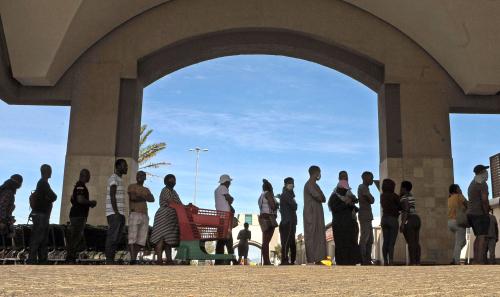
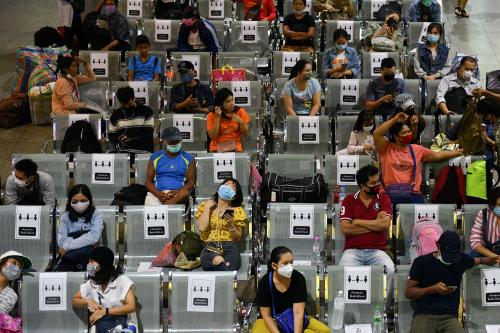
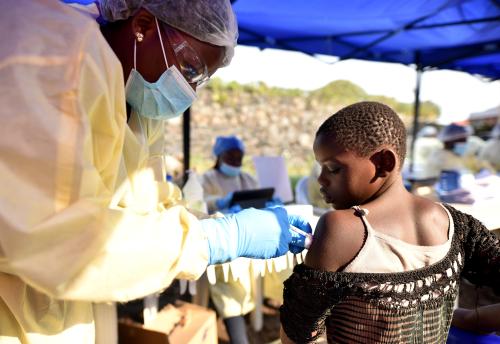

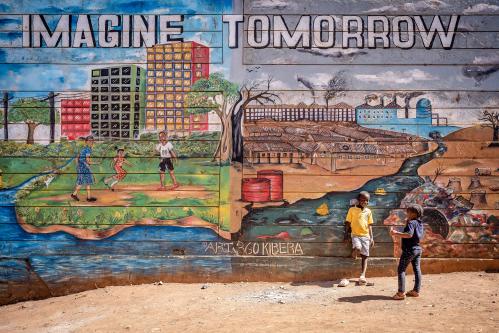
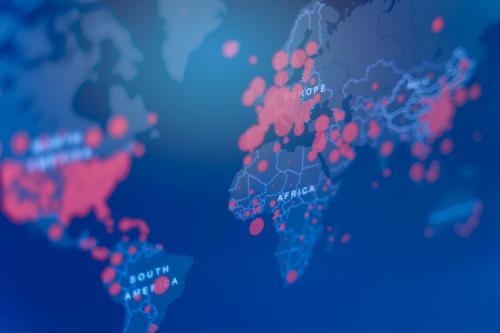
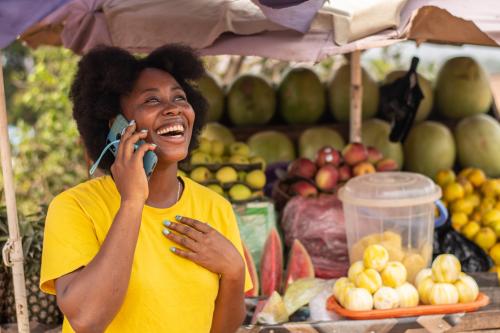
Commentary
Do countries have immune systems? 5 lessons from fragile states to help fight the coronavirus
March 24, 2020